Charles Darwin and the Voyage of Discovery of HMS Beagle 1831-1836

Darwin’s Voyage of Discovery was the second major voyage of HMS Beagle from 1831-1836.
The first voyage of Beagle, without Darwin, was commanded by Captain Pringle Stokes, from 1826 to 1830, for a hydrographic survey of Patagonia and Tierra del Fuego. This voyage is notable for the tragedy that befell Stokes. During the voyage through the desolate waters of Tierra del Fuego, Stokes fell into a deep depression and locked himself in his cabin for 14 days; he then shot himself. When the Beagle returned to Montevideo, Robert FitzRoy was given command of the Beagle for the rest of the voyage. FitzRoy would become the commander of the Beagle for the second voyage.

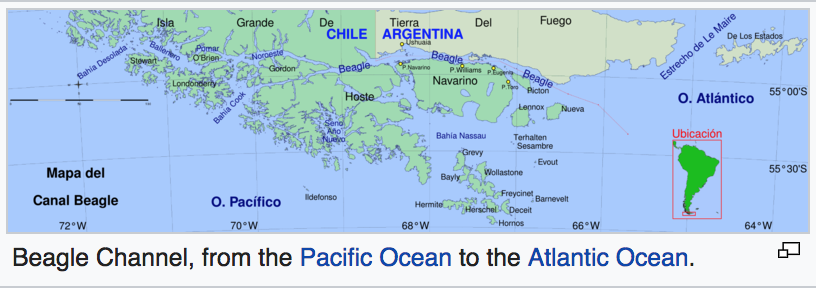
There was a third voyage of the Beagle from 1837-1843 when she was commissioned to survey large parts of Australia under Commander John Wickham.
The Second Voyage of Discovery of HMS Beagle 1831-1836


Darwin was born into a free-thinking family in Shrewsbury, Shropshire, on 12 Feb. 1809. Darwin was educated at the University of Edinburgh Medical School followed by entry into Christ’s College, Cambridge where he took a great interest in botany. Darwin’s voyage on HMS Beagle began in 1831 when Captain Robert FitzRoy invited Darwin to be an unpaid naturalist aboard the Beagle, about to begin a 5-year voyage to circumnavigate the world. Darwin had been recommended by his Cambridge professor as a ‘gentleman naturalist’ for the voyage. The primary purpose of the voyage was to survey the coastline and chart the harbours of South America in order to make better maps and protect British interests in the Americas.
Darwin was instructed to make scientific observations not only on the ocean but also on land, he spent over five-months ashore at various places during the five-year voyage.


The Beagle was a Cherokee-Class, 10-gun, brig-sloop launched on 11 May 1820. She was one of a hundred similar vessels built and although designed as a man-o-war she was modified to a survey barque for these three voyages. She was sold and broken up in 1870.

1831, Dec. 27
Darwin embarks on the Beagle with Commander Robert FitzRoy leading the expedition.
1832, Jan. 16
Beagle Lands in Porto Praya, Cape Verde Islands. Darwin was unable to visit Tenerife due to a cholera quarantine. Darwin had made plans for a visit to Tenerife to study natural history when he was in Cambridge. Darwin was interested to observe cuttlefish and their odd way of changing colour. He explores the volcanic island of St. Jago, 450 miles off the African coast.
1832, Feb. 14
Beagle crosses the equator.
1832, Feb. 29
Anchors in Fernando Norinho, Brazil, then sails to Bahia. Darwin explores the Brazilian rainforest and “saw a tropical forest in all its sublime grandeur. . .”

1832, Apr. 04
Anchors in Rio de Janeiro harbour and makes an excursion inland to Rio Macaé. Darwin is appalled by the cruel treatment he saw of slaves.
1832, Jul. 05
Leaves Rio to sail to Montevideo, Uruguay, where they arrive on 26 July.
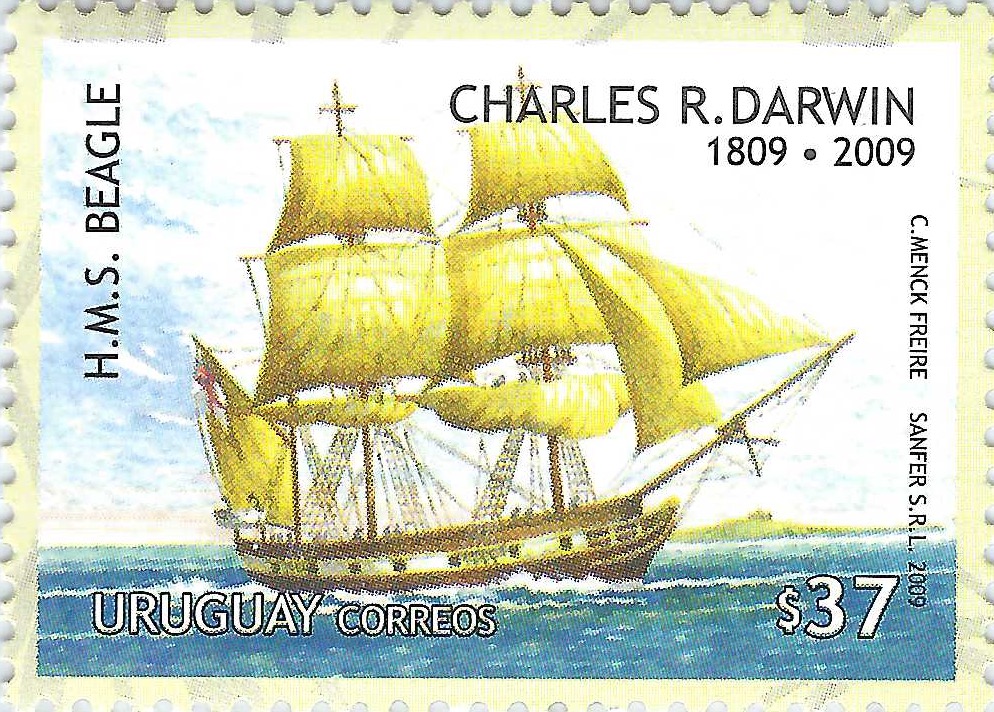

1832, Sep. 06
Arrives in Bahia Blanca, Argentina.

1832, Nov. 02
Arrives in Buenos Aires, Argentina. Darwin is intrigued by giant fossils. He digs up fossils of gigantic extinct mammals such as the ground sloth. Returns to Bahia.
1832, Dec. 05
Sails to the Patagonia Coast.
1832, Dec. 16
Darwin camps near a Fuegian Village and considers the tribal people of Tierra del Fuego “savages.” One of the goals of the Beagle voyage was to establish a Christian mission. FitzRoy’s attempt to spread Christianity throughout the village fails. Another goal was to repatriate three native people he had brought to England on the first voyage of the Beagle.
Beagle returns to Bahia to make more measurements.
1833, Jan. 15
Arrives at Navarino Island, Chile.
1833, Feb. 26
The Falkland Islands. Darwin finds the bleak and wind-swept Falkland Islands “desolate and barren.” However, he finds fossils, brachiopods, which are two shelled animals once among the most abundant creatures on Earth. Here Darwin collects distinctive island birds and fossils that offer a startling contrast to mainland species.

Darwin encounters a Magellanic penguin. A South American penguin breeding in coastal Patagonia, Argentina and The Falklands. Named after Ferdinand Magellan who spotted the birds in 1520.
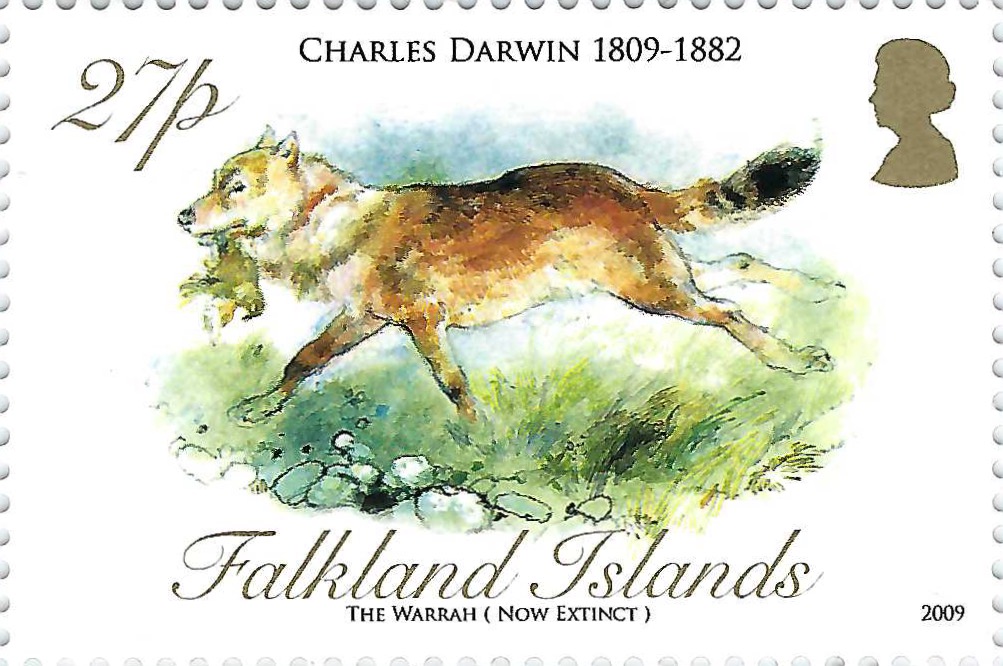
The Falkland Islands Wolf, also known as the Warrah, or the Falkland Islands Dog or Antarctic Wolf, is the only known land mammal native to the Falklands Islands. It became extinct in 1876. It is unknown as to how the Warrah arrived on the islands or how long ago.
1833, Apr. 06
Leaves the Falkland Islands for Patagonia.
1833, Aug. 03
Rio Negro, Argentina. Here Darwin explores the fertile lowland areas known as the Pampas. He rides across the plains of Patagonia with a group of Argentine Gauchos.
1833, Sep. 20
Buenos Aires
1833, Dec. 23
Port Desire, Argentina
1834, Feb. 22
Traverses the Straits of Magellan.
1834, Mar. 10
Darwin returns to the Falkland Islands where he carried out a zoological survey of the islands. The town of Darwin, lying on the Choiseul Sound, was named after him some 25 years after his visit.

1834, Apr. 13
Returns to Santa Cruz, Argentina.
1834, Jun.
The Beagle finally reaches the Pacific Ocean after two and a half years into the voyage.
1834, Jul. 23
Valparaiso, Chile
1834, Aug. 14
Makes a journey to Bell Mountain and the mines of Jajuel.
1834, Nov. 10
Leaves for Chiloe Island, Chile.
1835, Jan. 23
Chiloe. Here Darwin sees Mount Osomo erupt while he was on the island and he experiences an earthquake in the woods near Valdivia. Seeing the aftermath of the earthquake affected him tremendously.
1835, Feb. 01
Chiloe. The earthquake that Darwin experienced lifted the ocean floor and the land rose 2.7 meters above sea level. He climbed the Andes and found rocks containing fossil sea shells in mountains high above sea level. Darwin becomes certain that the mountains rose over time, “slowly and by little starts.”
1835, Mar. 11
Valparaiso, Chile
1835, Jul. 19
Lima, Peru
1835, Sep. 07
Leaves Lima for the Galapagos Islands.
1835, Sep. 16
Arrives on the Galapagos Islands at Isla de San Cristobel. Darwin finds many species of plants, birds and tortoises that are unique to the islands but seem to be mysteriously related to mainland species. In particular, Darwin was most fascinated by the enormous Galapagos tortoises and the marine Iguanas.


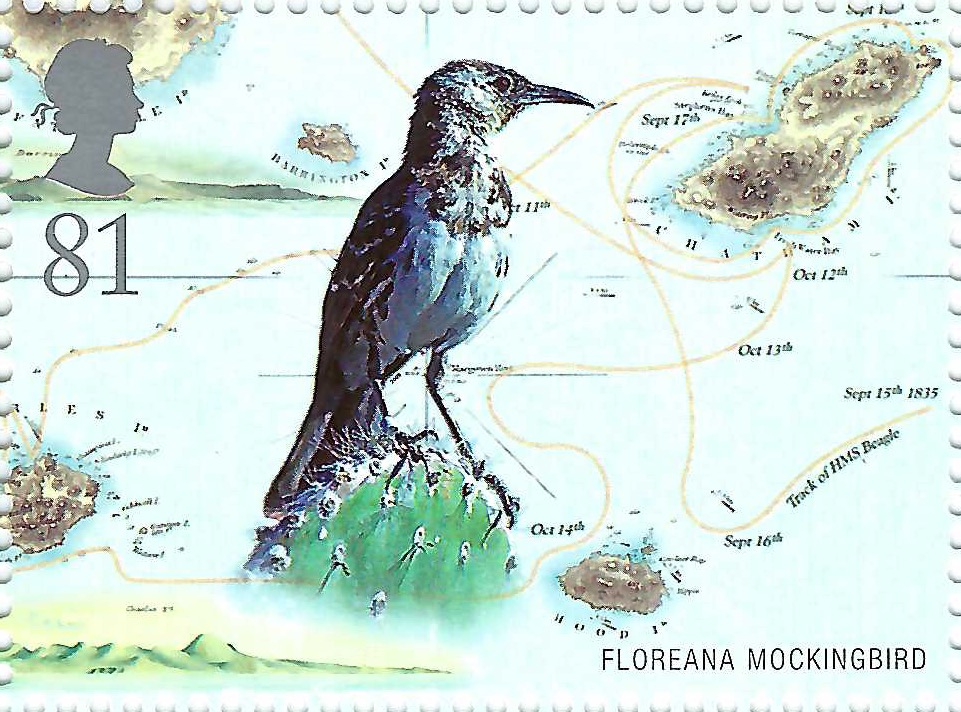



The Galapagos Marine Iguana is unique to the Galapagos Islands and is the only modern lizard that forages for food in the sea.





1835, Oct. 01
Isla Isabela, Galapagos Islands. This island is where Darwin first saw marine iguanas feeding under water, not feeding off fish but to his surprise algae. When he returned to London, Darwin was surprised to find out that the group of Galapagos specimens that he had thought included many different birds were actually all finches. Darwin did not have a “eureka” moment during his visit to the Galapagos. It was not until he was back in England that he developed his theory of evolution.
1835, Oct. 20
Leaves for Polynesia.
1835, Nov. 15
Hitiaa, Tahiti
1835, Nov. 20
Matavai Bay, French Polynesia
1835, Nov. 26
Leaves for New Zealand.
1835, Dec. 21
Bay of Islands, Pahia, North Island, New Zealand

1836, Jan. 01
Leaves New Zealand for Australia where Darwin arrives in Sidney Cove. He saw many different varieties of marsupials and began to wonder why there is a completely different set of mammals in Australia. The town of Darwin, capitol of the Northern Territory, was not visited by Darwin on this voyage. It was named Port Darwin in 1839 by John Wickham in honor of his former shipmate in a visit of the Beagle during the third voyage. It was renamed Darwin in 1911.
1836, Jan. 30
Leaves for Hobart, Tasmania.
1836, Feb. 05
Hobart

1836, Apr. 01
The Beagle arrives at the Cocos (Keeling) Islands. Darwin studied coral-reefs that were in evidence around islands in the Pacific to test his theory of atoll formation; land sinks, corals grow up to make up for sinking land. Darwin conceived of this idea on the voyage out to the Pacific and when captain FitzRoy chose to survey the Cocos (Keeling) Islands, the result supported Darwin’s theory. A Volcano is created and rises up to form an island. As the extinct volcano starts sinking, a reef grows around the cone forming first a barrier reef then an atoll once the volcano has submerged. As a part of his research, Darwin also studied the different corals that formed on atolls and reefs.




1836, Apr. 29
Mauritius. Darwin observes and notes on a walk along the coast, a plain quite uncultivated consisting of a field of black lava, smoothed over with coarse grass and bushes, the greater part were mimosas.
1836, May 31
Cape Town, South Africa. Darwin visits the Cape winelands where the geology of the mountainous regions of the Western Cape left a lasting impression on him which influenced his ideas on organic evolution. His publication The Origin of Species left a lasting impact on the science of winemaking.
1836, Jul. 08
St. Helena. Flagstaff Hill and The Barn form two of the most prominent features on the northern part of the island. Darwin supposes that the hill once formed the lower extremity of a sheet of lava and ashes which erupted from a central, crateriform ridge. It was on St. Helena that Darwin’s observations confirm his belief that volcanos were forced up slowly from the sea bed to form islands above the sea’s surface and this can be observed by the layers of different rocks from the many eruptions under water.

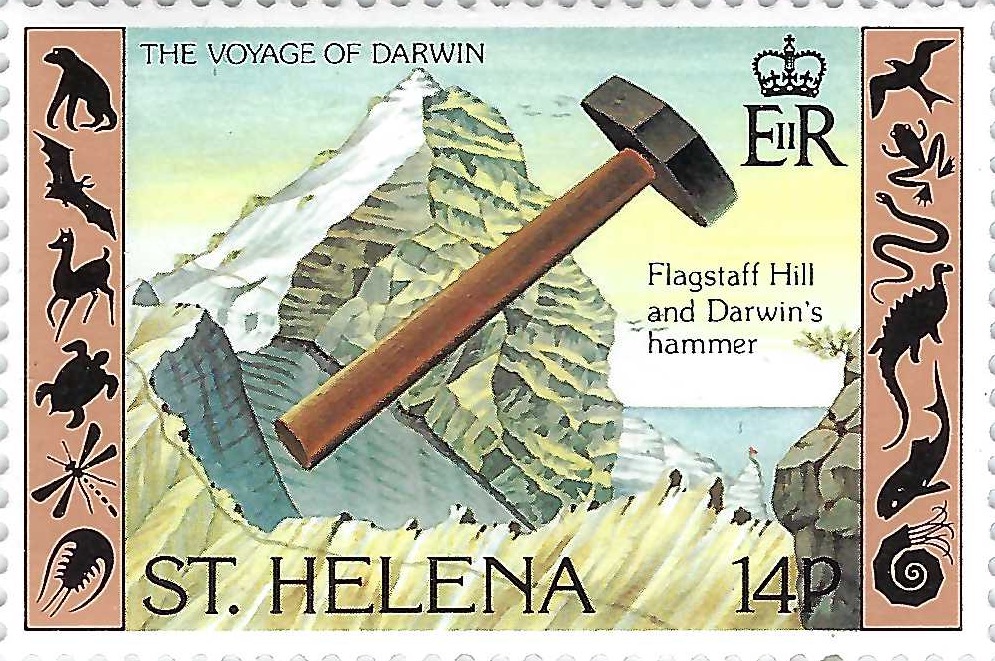
The Rheinhardt’s Argus Pheasant occupied a prominent place in Darwin’s “Descent of Man,” on account of the enormous development of the secondary wing-feathers, the like of which is seen in no other bird.


1836, Jul. 19
Ascension Island. After visiting St Helena, Darwin sails to Ascension Island which was a barren, windswept island devoid of trees, but contains a busy Royal Naval base. Darwin and his Botanist, Joseph Hooker, advise the Royal Navy, with the help of Kew Gardens, to send shipments of trees to Ascension. These would capture more rain, reduce evaporation and create rich loamy soils. Starting in 1850 and continuing year after year, an assortment of trees from Europe, South Africa and Argentina were planted. By the 1870s great changes could be seen as trees had run riot across the island and created a completely new and lush environment. The world’s first experiment in “terra-forming”. They had created a self-sustaining and self-reproducing ecosystem in order to make Ascension more habitable.

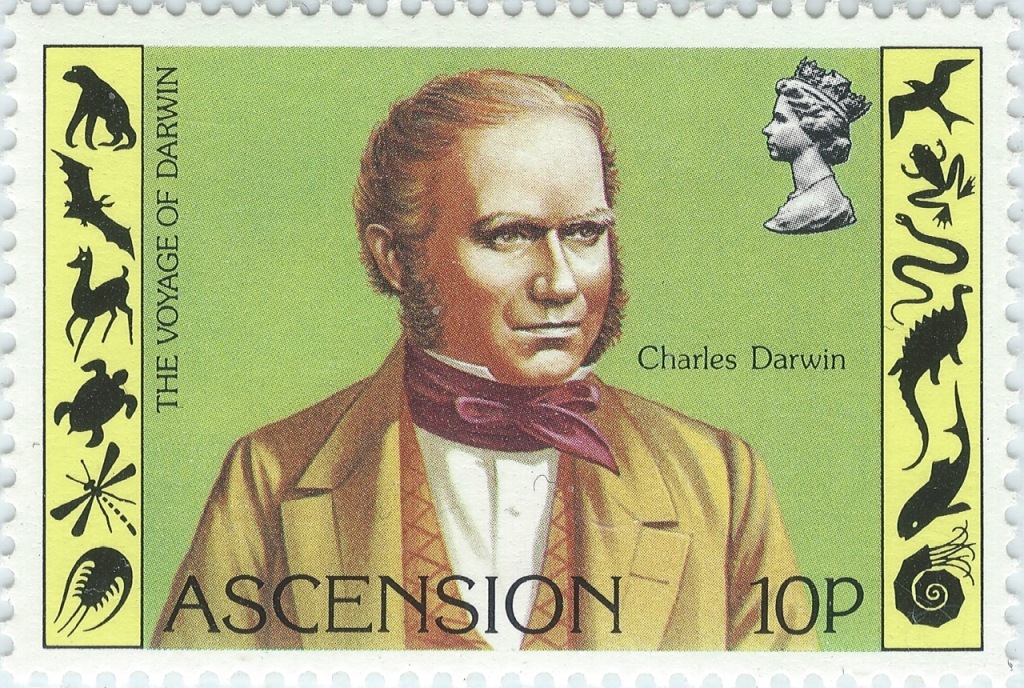
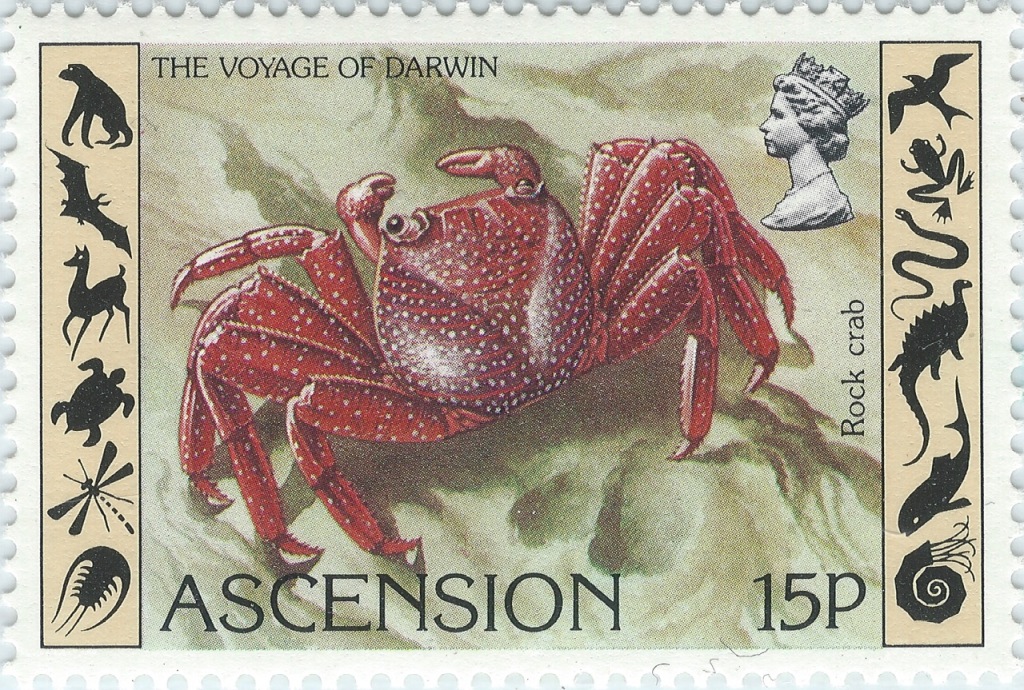


The Parsley Fern is unique to Ascension and presumed extinct. It was nearly eradicated after the island was planted with trees and shrubs under the advice of Charles Darwin. A few plants were discovered in 2011 and brought back to Kew Gardens in London for cultivation.
1836, Aug. 01
Bahia and Pernambuco, South America. In the jungles of South America, Darwin finds many incredible creatures. However, homesick and seasick, he is dismayed when the Beagle makes an unscheduled detour to make additional longitudinal measurements.
1836, Sep.
Azores, Angra
1836, Oct. 02
Falmouth, England. The Beagle reaches the end of its 5-year journey circumnavigating the world.
1859, Nov. 24
When Darwin returns to England he spent several years rewriting his diaries and publishing various books. It took him until 1859 to publish his most famous book The Origin of Species. His work established evolutionary descent as the dominant explanation of the diversity in nature. It was not very well received when published, however, over the years it became a staple scientific text attracting attention from all walks of life.

1882, Apr. 19
Darwin dies aged 73 in Downe, Kent.

I love your blog.. very nice colors & theme. Did you create this website yourself or did you hire someone to do it for you? Plz reply as I’m looking to create my own blog and would like to know where u got this from. thank you
LikeLike
Thank you for the good writeup. It in truth used to be a enjoyment account it.
LikeLike
Wow, great blog structure! The length of time are you currently blogging for? you built blogging look easy. The beauty of your online site is great, let alone the material!
LikeLike
Goodness, uncommon blog structure! The time interval would you say you are correct now adding to a blog for? you collected distributing content to a blog look basic. The greatness of your web based website page is remarkable, also the material!
LikeLike
Genial, gracias por compartir esta publicación. Tengo muchas ganas de leer más. Realmente genial.
LikeLike
Normally I don’t learn post on blogs, but I wish to say that this write-up extremely pressured me to try and do it! Your writing taste has been surprised me. Thanks, pretty good post.
LikeLike
Wow, great blog structure! The length of time are you currently blogging for? you built blogging look easy. The beauty of your online site is great, let alone the material!
LikeLike
Goodness, extraordinary blog structure! The time span would you say you are right now contributing to a blog for? you assembled publishing content to a blog look simple. The excellence of your internet based webpage is extraordinary, not to mention the material!
LikeLike
Wow, great blog structure! The length of time are you currently blogging for? you built blogging look easy. The beauty of your online site is great, let alone the material!
LikeLike
Regularly I don’t learn on sites, yet I wish to say that this review very constrained me to attempt to do it! Your composing taste has been shocked me. Much obliged, very great post.
LikeLike
my god, incredible blog structure! The time span would you say you are right now publishing content to a blog for? you assembled publishing content to a blog look simple. The excellence of your internet based website is extraordinary, not to mention the material!
LikeLike
I’m truly enjoying the design and layout of your website.
It’s a very easy on the eyes which makes it much
more enjoyable for me to come here and visit more often. Did you hire out a designer to create
your theme? Outstanding work!
LikeLike
my god, incredible blog structure! The time span would you say you are right now publishing content to a blog for? you assembled publishing content to a blog look simple. The excellence of your internet based website is extraordinary, not to mention the material!
LikeLike
Goodness, uncommon blog structure! The time interval would you say you are correct now adding to a blog for? you collected distributing content to a blog look basic. The greatness of your web based website page is remarkable, also the material!
LikeLike
nice post, keep it up
LikeLike
my god, incredible blog structure! The time span would you say you are right now publishing content to a blog for? you assembled publishing content to a blog look simple. The excellence of your internet based website is extraordinary, not to mention the material!
LikeLike
wawwww it briliant https://rumble.com/vt6ipy-the-beagle.html
LikeLike
great work
LikeLike
i love this
LikeLike
great work
LikeLike
First of all I would like to say terrific blog! I had a quick question that I’d like to ask if you don’t
mind. I was interested to find out how you center yourself and clear your thoughts prior
to writing. I have had a hard time clearing my mind in getting my ideas out there.
I truly do take pleasure in writing however
it just seems like the first 10 to 15 minutes are lost simply just trying to figure out how
to begin. Any ideas or hints? Thank you!
LikeLike
Hi there to every one, because I am truly eager of reading this weblog’s post to be updated regularly.
It includes good data.
LikeLike
It is not my first time to pay a visit this web page, i am browsing this
web page dailly and get pleasant data from here every day.
LikeLike
Thanks for sharing, this is a fantastic article. essentially Cool.
LikeLike